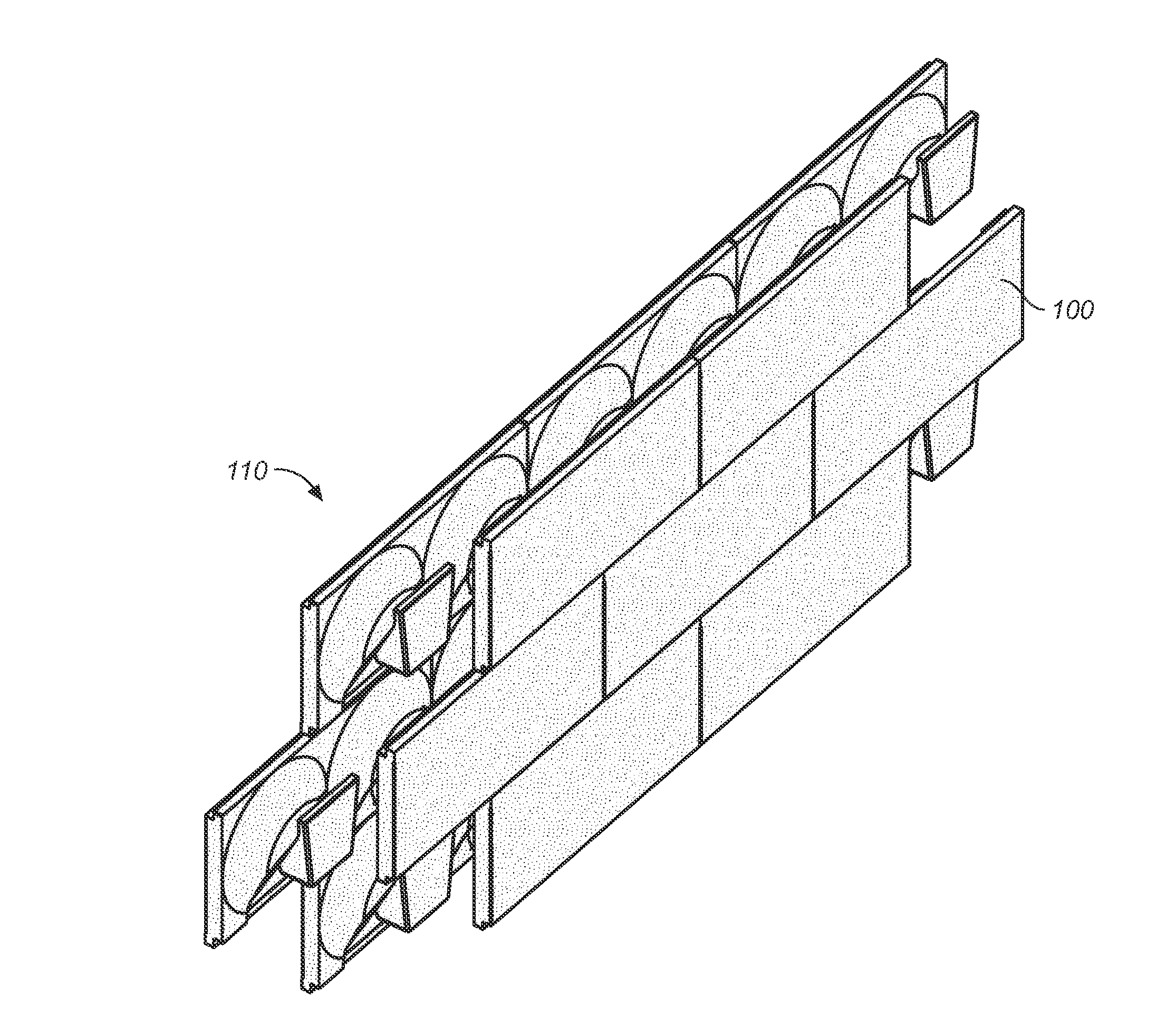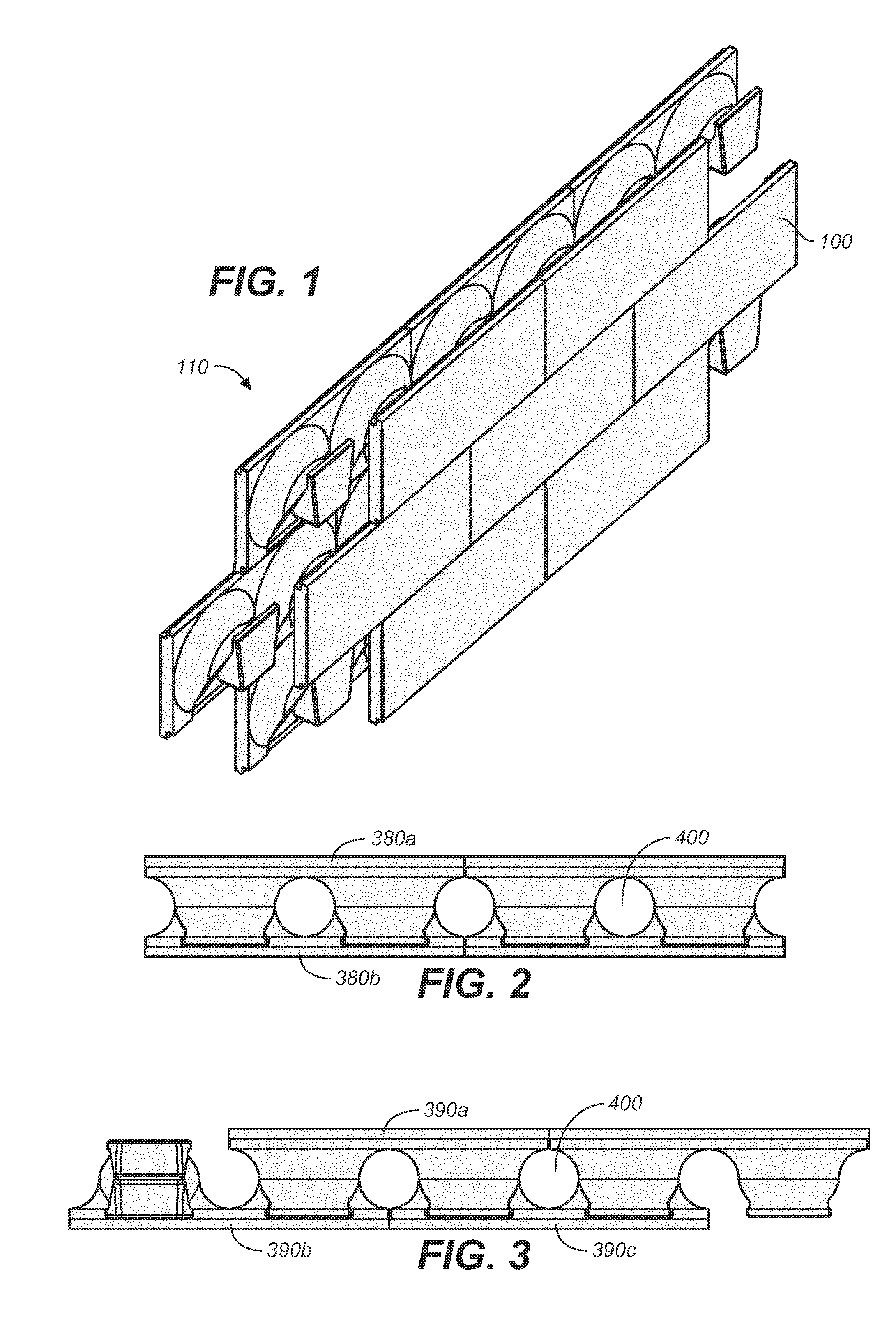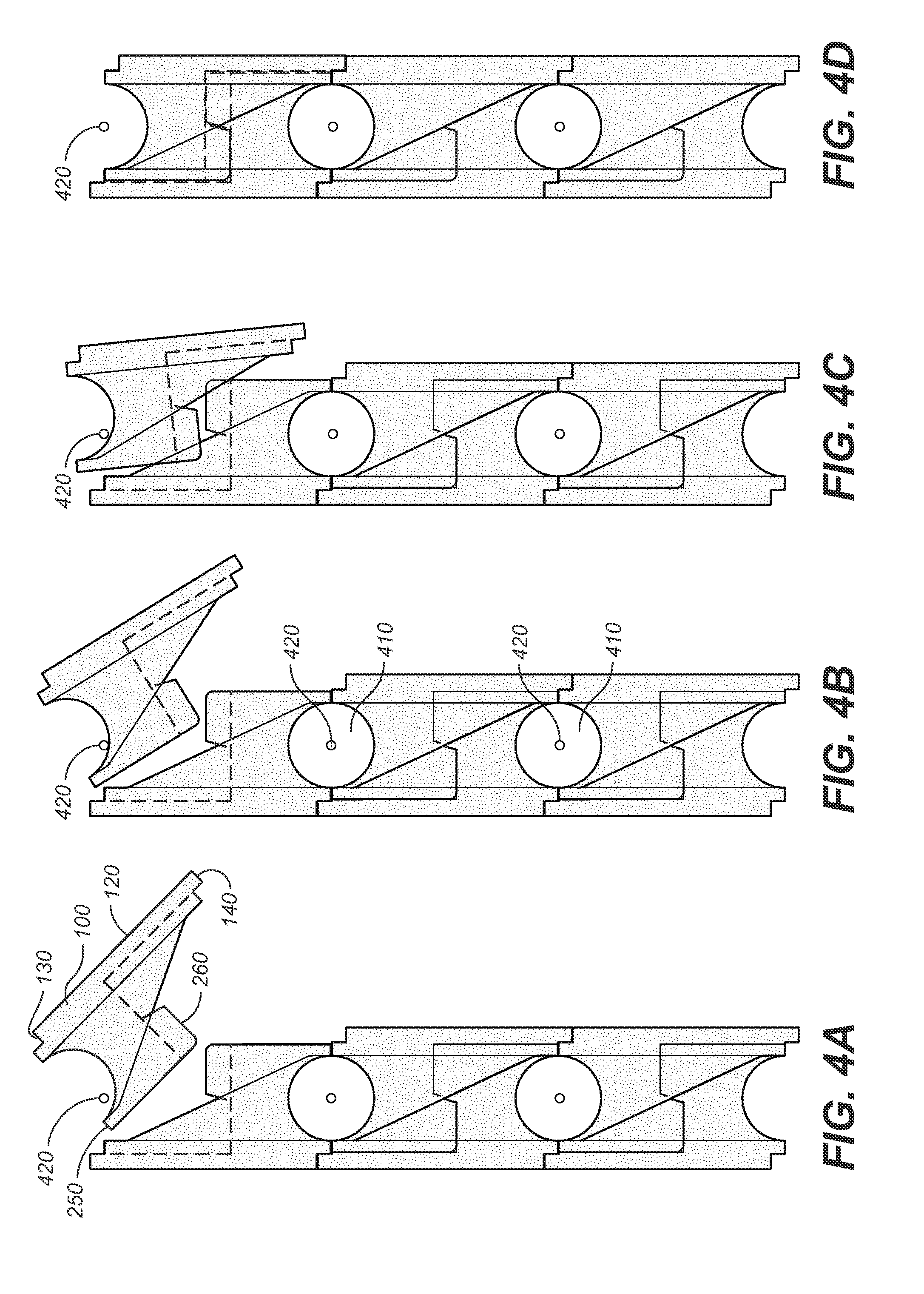Two part interlocking unit block wall building system
a technology of interlocking unit blocks and building systems, which is applied in the direction of walls, excavations, artificial islands, etc., can solve the problems of difficulty in converting the wall units into end or corner units, high construction cost of walls, and difficulty in adjusting the size, adjusting the size, etc., to achieve the effect of convenient adjusting, adjusting and scaling
- Summary
- Abstract
- Description
- Claims
- Application Information
AI Technical Summary
Benefits of technology
Problems solved by technology
Method used
Image
Examples
embodiment 100
[0057]FIG. 1 shows a wall constructed with three courses using the first preferred embodiment 100 of the cementitious block of the present invention, the details of which are shown in FIGS. 5-12. FIGS. 1-4D show how the block elements of the first preferred embodiment combine to form interlocking units for such a wall construction. FIGS. 13-20 depict a second preferred embodiment of the present invention.
[0058]Referring first to FIGS. 5-12, there is shown various views of one of the preferred embodiments of the cementitious block of the present invention. These views collectively show that in its most essential form, the block includes a monolithic cementitious unit 100 having a generally planar front face 120, a first edge 130, a second edge 140, a first (right) end 150, a second (left) end 160, a back face 170, and at least one male interlocking element 180. Preferably each block includes two male interlocking elements 180a, 180b. Each male interlocking element comprises a taperin...
embodiment 500
[0063]Referring now to FIGS. 13-20, there is shown a second preferred embodiment 500 of the cementitious block of the present invention. This block includes all the structural features of the above-described (alternative) embodiment, including a monolithic cementitious block 510 having a generally planar front face 520, a first edge 530, a second edge 540, a first end 550, a second end 560, a back face 570, and at least one male interlocking element 580. Again, preferably each block includes two male interlocking elements 580a, 580b.
[0064]Male interlocking elements include elements identical to those of the first preferred embodiment, including a tapering conical leg which projects and extends outwardly into an integral ankle portion, which, in turn, expands into a shoe portion, which has a flat sole, a lateral upper portion, a medial upper portion, a flat toe, a heel, a vamp, and a topline. The edge of the adjoining upper and sole portions define a beveled feather, and the edges o...
PUM
 Login to View More
Login to View More Abstract
Description
Claims
Application Information
 Login to View More
Login to View More - R&D
- Intellectual Property
- Life Sciences
- Materials
- Tech Scout
- Unparalleled Data Quality
- Higher Quality Content
- 60% Fewer Hallucinations
Browse by: Latest US Patents, China's latest patents, Technical Efficacy Thesaurus, Application Domain, Technology Topic, Popular Technical Reports.
© 2025 PatSnap. All rights reserved.Legal|Privacy policy|Modern Slavery Act Transparency Statement|Sitemap|About US| Contact US: help@patsnap.com



